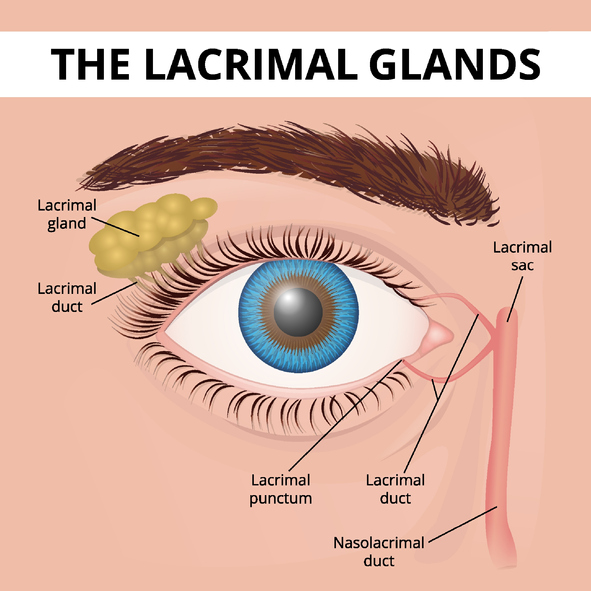Blocked Tear Duct
A blocked tear duct is when the eye’s tear drainage system is either partially or completely blocked. Tears cannot drain properly, resulting in a watery, irritated or chronically infected eye.

Blocked tear ducts can happen to anyone of any age. Causes of blocked tear ducts include:
Tumors: A tumor anywhere near the tear ducts, such as in the nose, can cause blocked tear ducts.
Babies don’t start producing tears until they are a few weeks old. You may not notice a blocked tear duct in a newborn right away. As babies get older, blocked tear duct symptoms might include:
Tests used to diagnose a blocked tear duct include:
Eye imaging tests. For these procedures, a contrast dye is passed from the puncta in the corner of your lid through your tear drainage system. Then X-ray, computerized tomography (CT) or magnetic resonance imaging (MRI) is used to find the location and cause of the blockage.
Often, a blocked tear duct in a newborn resolves without treatment. In the first few months of life, the baby’s tear ducts may mature and eliminate the blockage.
Sometimes, a baby still has a small piece of tissue blocking the flow of tears inside the nose. Your baby’s provider may teach you a special eyelid massage technique. This massage helps open the tissue so tears can drain as they should.
If a watch-and-wait approach does not work, providers may use dilation and flushing, balloon catheters or stents. These treatments work the same way in babies as they do in adults. However, providers use general anesthesia to keep babies still and calm during the procedure.
Blocked tear duct treatment depends on the cause. For example, if you have a tumor, your treatment focuses on removing or shrinking the tumor.
Additional treatment options may include:
Snip punctoplasty: Your provider makes two or three small incisions around your puncta. These incisions create a larger tear duct opening. Snip punctoplasty is a common treatment for partial blockages.
Eye Center South continues to grow our team of skilled specialists to provide world class care to our patients. Each of our clinics provide convenient access to specialized eye care, using the latest technology from one of our skilled surgeons. Visit one of our many specialists at the location nearest you for a consultation today.